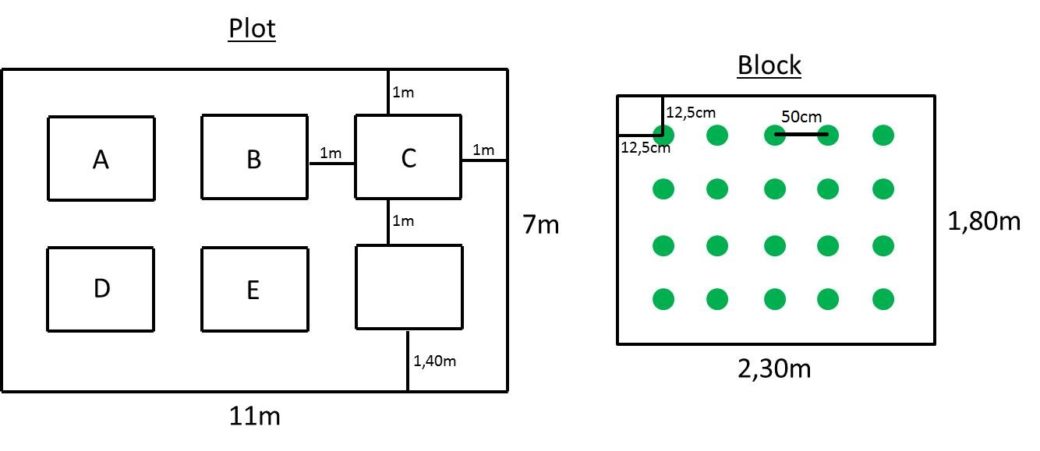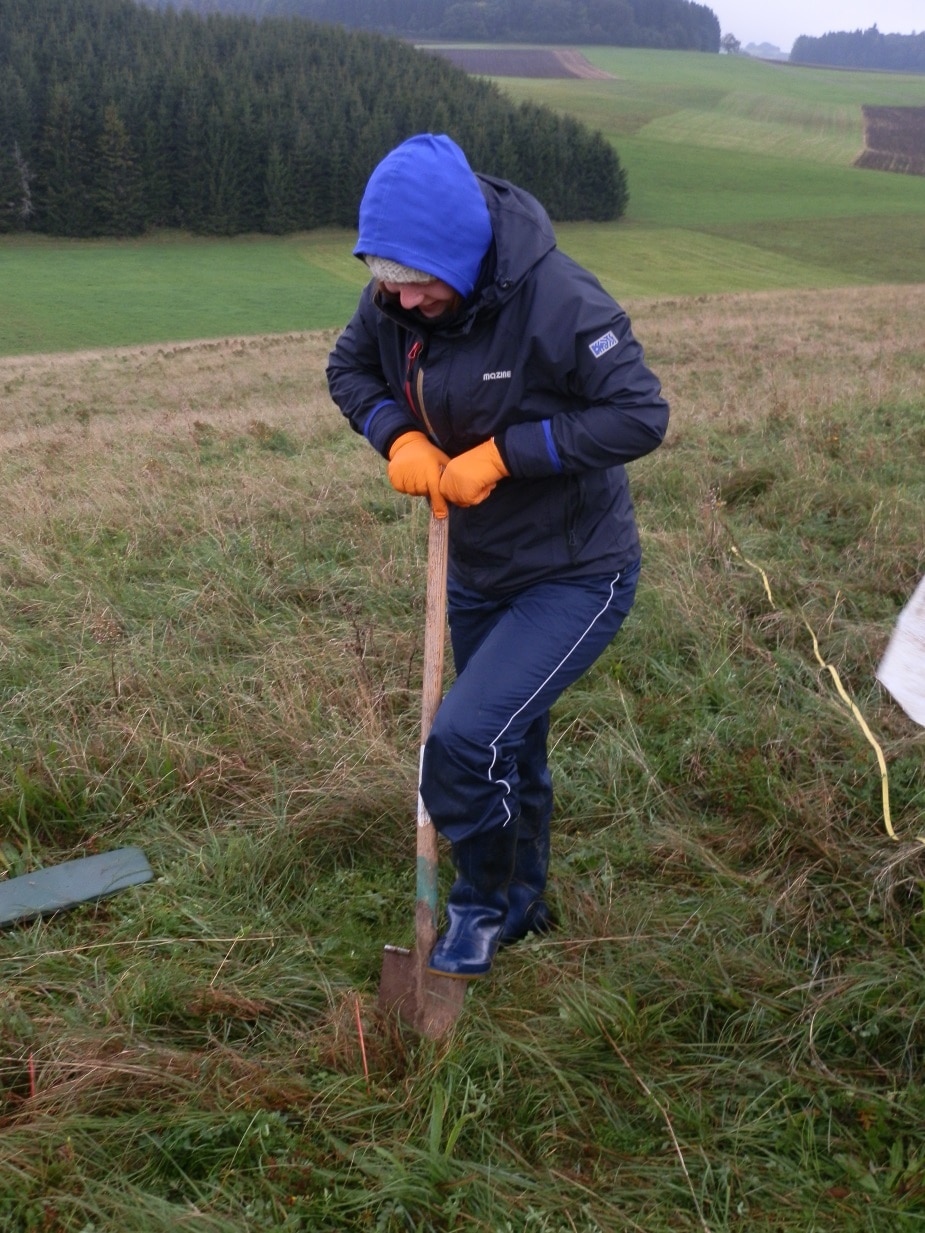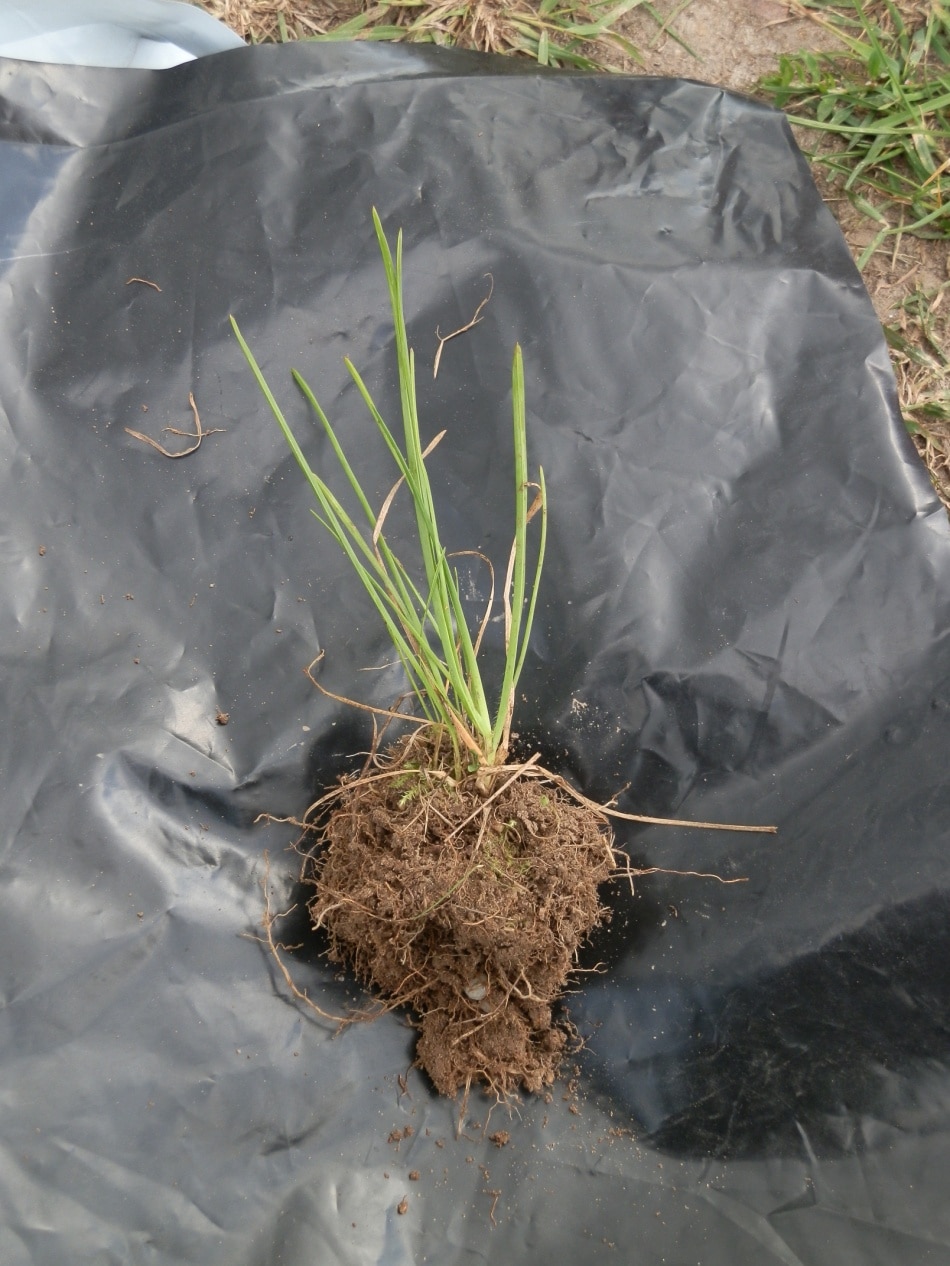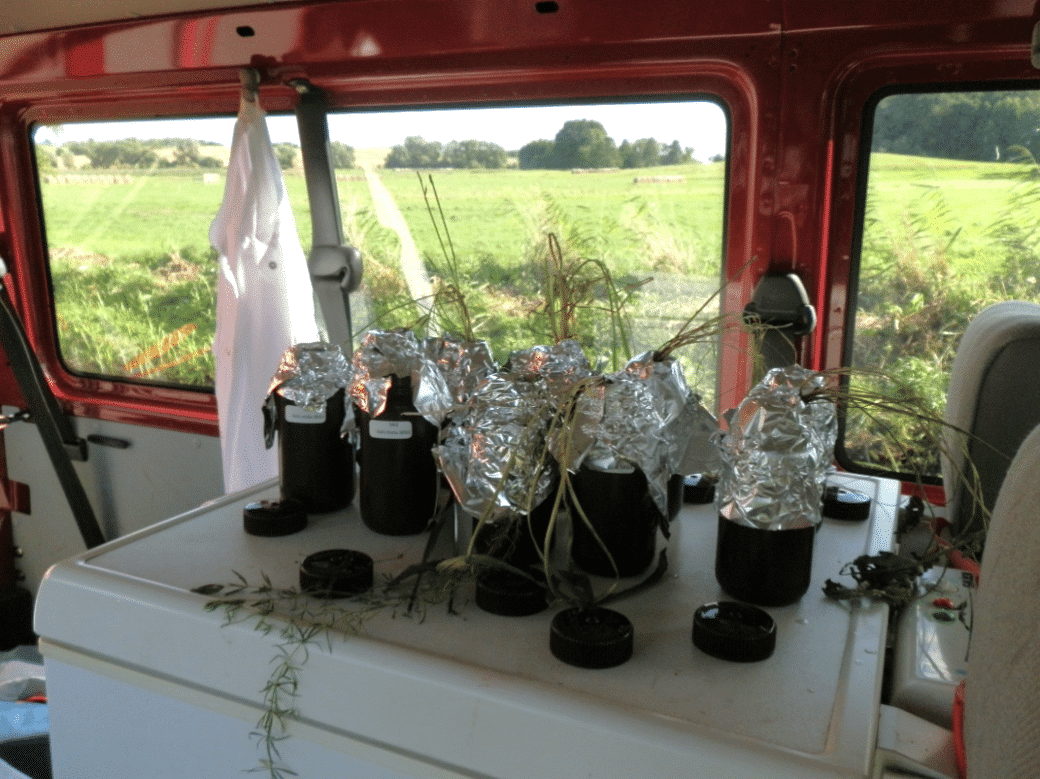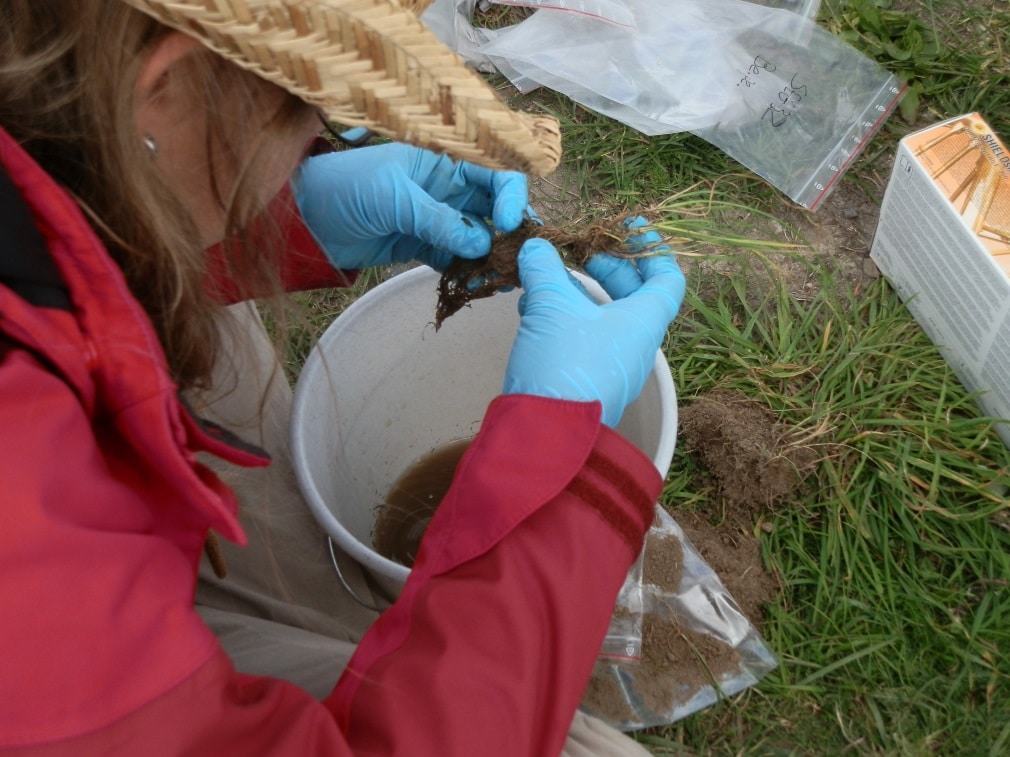Analysis of root traits to test for environmental filtering and niche complementarity in grassland communities
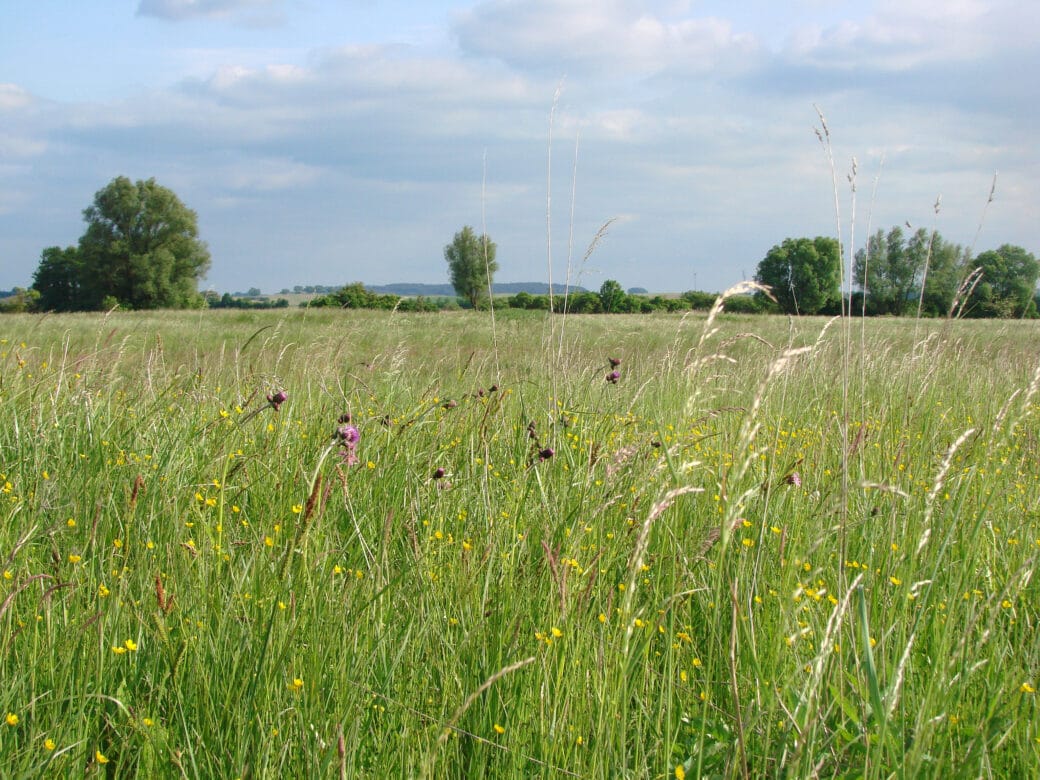
The assembly of a plant community can be either explained by environmental filtering or niche complementarity. These two processes oppose each other, and it is not a priori clear which of them dominates species assembly in a certain community. While much research has been done on aboveground plant traits to understand plant community assembly and ecosystem functioning, there seems to be a blind spot on belowground plant traits. The project BE LOW aims to fill this gap by investigating belowground characteristics of 20 common grassland species of the exploratories. Additionally, root exudates of 10 of the 20 species will be measured in the field, which was only made for greenhouse cultures so far.
Our objectives are:
- to predict the performance of species introduced to a community from above- and belowground traits and to compare these predictions to those obtained from co-occurrence information
- to analyse root traits in addition to leaf traits of the grassland species in the exploratories and to analyse how leaf and root traits are related to each other and how they respond to different local neighbourhoods
- to characterize species-specific root exudation patterns, including the full spectrum of low molecular organic compounds exuded by different plant species
- to analyse how root exudation patterns and trait values change with residence time in a community and respond to land use
- Phytometer survival and performance can be predicted from the statistical probability of cooccurrence of the phytometer species in a specific local neighbourhood.
- Community-weighted mean traits and functional diversity of phytometer neighbourhoods are related to land use intensity.
- There is a relationship between the root and the leaf economics spectrum. More specifically (3.1), we hypothesize that root trait values of grass species differ from those of herb species.
- Phytometer survival and performance can be predicted from the degree of trait similarity/dissimilarity to the trait composition of the specific local neighbourhood. We expect that in a specific environmental setting there is a defined degree of trait similarity to the resident neighbourhood community at which performance is maximized, caused by a balance of environmental filtering versus limiting similarity. Furthermore (4.1), the degree of trait similarity at optimum performance of a phytometer plant decreases with increasing land use intensity, because with increasing environmental filtering a species should perform the better, the more similar it is to its neighbours.
- Root trait values and root exudation patterns are plastic and will be adjusted to the local neighbourhood and to land use. In particular (5.1), we expect that the adjustment will proceed with time.
- Certain root trait values and exudates result in a change in soil conditions (C, N, cations, pH) with time.
- Root exudate composition is plant species-specific. In particular, grass species differ from herb species. We also expect a congruence between root traits and root exudate patterns.
Of each exploratory, 18 grassland EPs (6 meadows, 6 pastures and 6 mown pastures) were selected for the experiment. Within each plot, 5 blocks were established in May 2014 with each block containing one individual of each species (in total 5400 phytometer). One block per plot will be harvested in late summer 2014, 2015 and 2016 each. We will dig out the whole plant, take soil samples, wash the roots and prepare 5 grasses and 5 herbs (Table, grey highlighted cells) for exudation. After exuding for 2h all plants will be scanned and weighed separately (roots, shoots and leafs parted from each user). Leaf, shots and parts of the roots will be dried whereas some root material will be frozen immediately in liquid nitrogen for metabolite profiling. The dried roots are analysed under lab conditions for their P, K, Mg, Ca, C and N content in the Geobotany in Halle (Saale). The root exudates and metabolites are analysed via UPLC-ESI-QTOF-MS and GC-EI-MS in the Leibniz Institute of Plant Biochemistry in Halle (Saale). Besides the field work plants will be cultivated under controlled greenhouse conditions und treated and analyzed as described above. In case of the metabolite profiling the results will be used to determine the exudation pattern of the exuded plants (gray highlighted). In case of the traits analyses the greenhouse cultures will be used to measure traits without competition.
